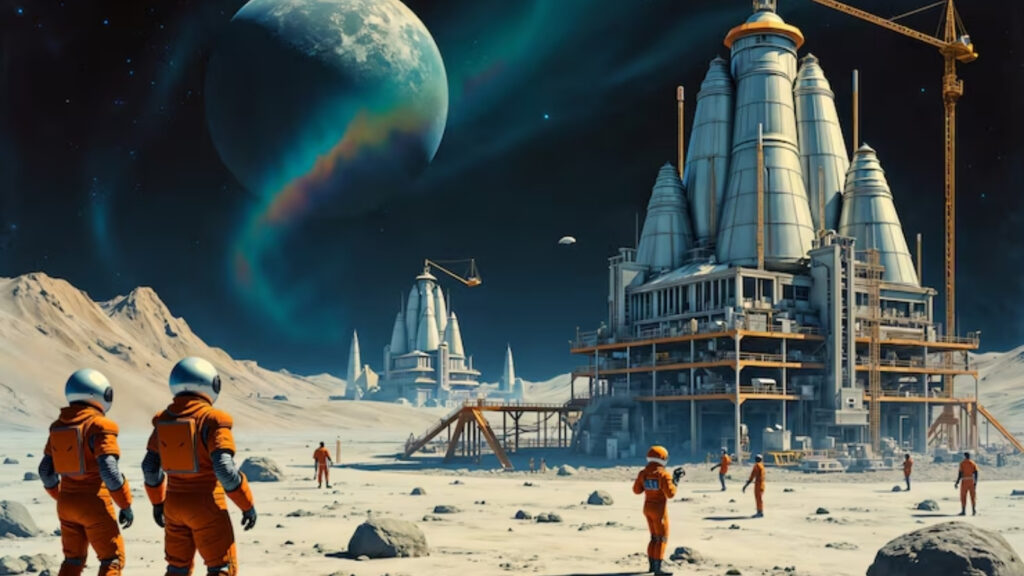🪐 Introduction: The Renaissance of Space Exploration
We are living through what many call The Renaissance of Space Exploration — a transformative era marked by renewed interest, exponential innovation, and global collaboration in space science.
Unlike the Cold War-era race, this renaissance isn’t just about who gets there first. It’s about why we go, how we go, and what we bring back — in knowledge, technology, and inspiration.
So, what’s fueling this space-age rebirth, and what does it mean for Earthlings like us?
Let’s explore.
📜 Table of Contents
- Introduction
- What Sparked the Modern Space Renaissance?
- The Role of Private Companies in the New Space Race
- Government Missions: Artemis, Mars, and Beyond
- Key Technological Breakthroughs Fueling the Movement
- Why This Space Renaissance Matters to You
- Challenges and Ethical Considerations
- Future Outlook: The Next Frontier
- FAQs
- Conclusion
🚀 What Sparked the Modern Space Renaissance?
Several major forces have reignited humanity’s passion for space:
- Technological leaps in AI, robotics, propulsion, and communication
- Commercial competition among tech billionaires and aerospace companies
- Renewed governmental interest in lunar and Martian exploration
- Global collaboration beyond traditional superpowers
This time, space isn’t just about prestige. It’s about economy, science, and survival.
Notable Events That Triggered the Shift:
- SpaceX’s Falcon 9 Reusability Success (2015–present)
- NASA’s Artemis Program Revival
- China’s Moon Missions and Space Station (Tiangong)
- The James Webb Space Telescope’s Launch (2021)
These milestones have redefined what’s possible.
🛰 The Role of Private Companies in the New Space Race
Private aerospace firms are at the center of this renaissance.
🔹 Top Players:
- SpaceX: Pioneering reusable rockets and Starship for Mars colonization
- Blue Origin: Focusing on suborbital tourism and lunar landers
- Rocket Lab, Relativity Space, and Astra: Offering flexible, cost-efficient launches
- Virgin Galactic: Bringing space tourism into mainstream consciousness
🔹 Key Impacts:
- Lower launch costs (from ~$18,500/kg to ~$2,000/kg)
- Faster innovation cycles
- Space accessibility for startups, universities, and smaller nations
Private players have shifted space from state-run exclusivity to market-driven opportunity.
🌕 Government Missions: Artemis, Mars, and Beyond
While private companies innovate, governments still lead deep space science.
🔸 NASA’s Artemis Program
- Goal: Return humans to the Moon by 2026
- Future: Build a permanent lunar base as a gateway to Mars
🔸 ESA and JAXA (Europe & Japan)
- Leading asteroid sample return and solar system studies
🔸 China’s CNSA
- Built its own space station (Tiangong)
- Landed on the Moon and Mars
- Plans for lunar base with Russia
🔸 India’s ISRO
- Successful budget Mars mission (Mangalyaan)
- Chandrayaan-3 landed near Moon’s south pole in 2023
🌍 Humanity is no longer Earth-bound — it’s increasingly Earth-independent.
🧠 Key Technological Breakthroughs Fueling the Movement
This space renaissance would be impossible without cutting-edge tech. Here’s what’s making the impossible, possible:
🔬 Top Innovations:
- Reusable Rockets (e.g., Falcon 9, Starship): Reducing costs dramatically
- Ion Propulsion & Nuclear Thermal Engines: For deep-space travel
- Artificial Intelligence: Navigating, diagnosing, and piloting craft autonomously
- 3D Printing in Space: Enabling lunar/Mars construction
- Space Habitats: Using inflatable modules and regolith-based materials
These technologies are bridging sci-fi and science fact — fast.
🌎 Why This Space Renaissance Matters to You
Even if you never leave Earth, the impacts are real and close to home.
🔹 Economic Growth: The Renaissance of Space Exploration
The space economy is expected to hit $1 trillion by 2040, opening doors in:
- Satellite broadband
- Space mining
- Earth observation
- Tourism and travel
- STEM careers and startups
🔹 Climate Solutions: The Renaissance of Space Exploration
Satellites play a huge role in monitoring:
- Deforestation
- Polar ice melt
- Wildfire patterns
- Ocean acidification
🔹 Global Unity
Unlike the Cold War’s space race, today’s model emphasizes collaboration, not conflict.
“When we explore space, we unify under one flag — the human flag.” – Anonymous astronaut
⚠️ Challenges and Ethical Considerations
Progress comes with complexity.
🔸 Major Issues: The Renaissance of Space Exploration
- Space debris and collisions (over 30,000 tracked objects)
- Weaponization of space
- Exploitation of extraterrestrial resources
- Lack of clear international law for space mining and ownership
Humanity must move wisely, not just quickly.
🌌 Future Outlook: The Next Frontier
The next two decades will be decisive.
What’s on the Horizon?
- Human Mars missions (2030s)
- Lunar bases and permanent presence
- Asteroid mining for rare elements
- Space-based solar power stations
- Orbital data centers and manufacturing
It’s no longer if, but when.
❓ FAQs about The Renaissance of Space Exploration
q. What is the Renaissance of Space Exploration?
A. It refers to the modern revival of global space activities driven by technological innovation, private sector involvement, and international cooperation.
q. How is this different from the original space race?
A. The original race was state-led and politically driven. Today’s renaissance is commercially fueled, technologically advanced, and collaborative.
q. What countries are leading in this new era?
A. USA, China, India, and the EU are at the forefront, but many emerging economies are joining via partnerships and startups.
q. What role do private companies play?
A. They lower launch costs, accelerate innovation, and democratize space access for more industries and nations.
Q. Will we see humans on Mars soon?
A. Realistically, crewed missions to Mars may occur by the late 2030s, spearheaded by NASA and SpaceX.
✅ Conclusion: The Renaissance of Space Exploration
We are witnessing The Renaissance of Space Exploration — a bold, visionary, and transformative era for humanity.
Fueled by innovation, shared goals, and a renewed sense of wonder, this space renaissance invites governments, private sectors, and individuals alike to look beyond Earth and dream big.
🌠 Whether you’re a student, entrepreneur, scientist, or simply curious — now is the time to engage.






